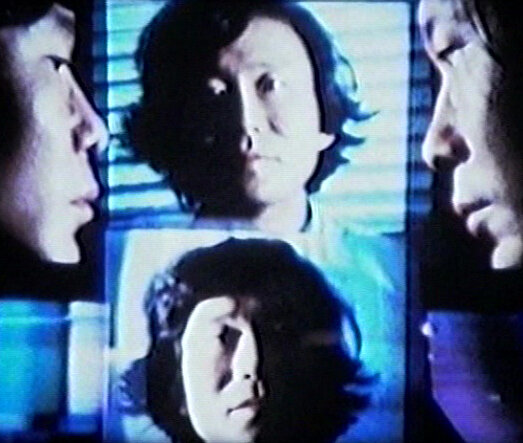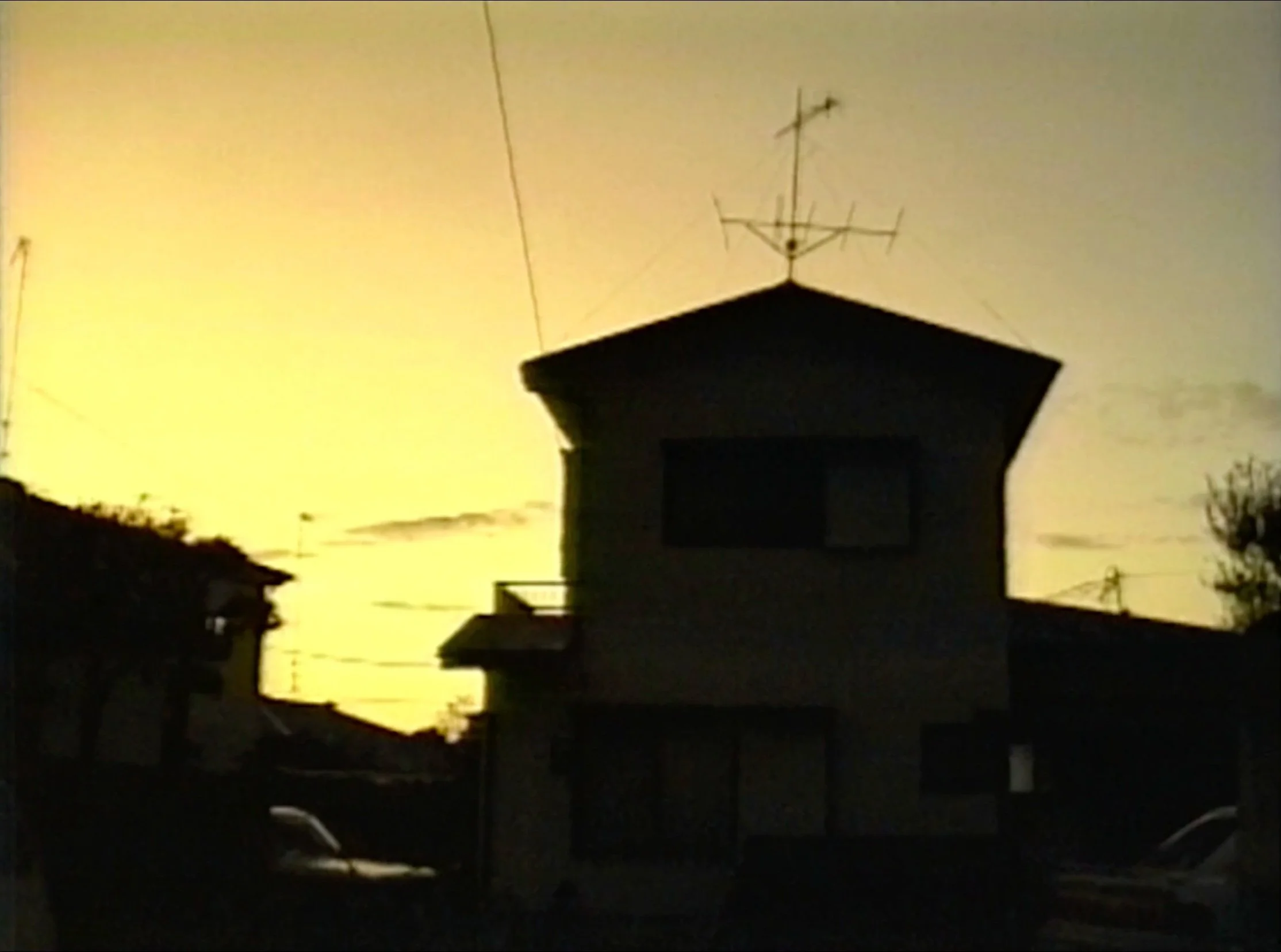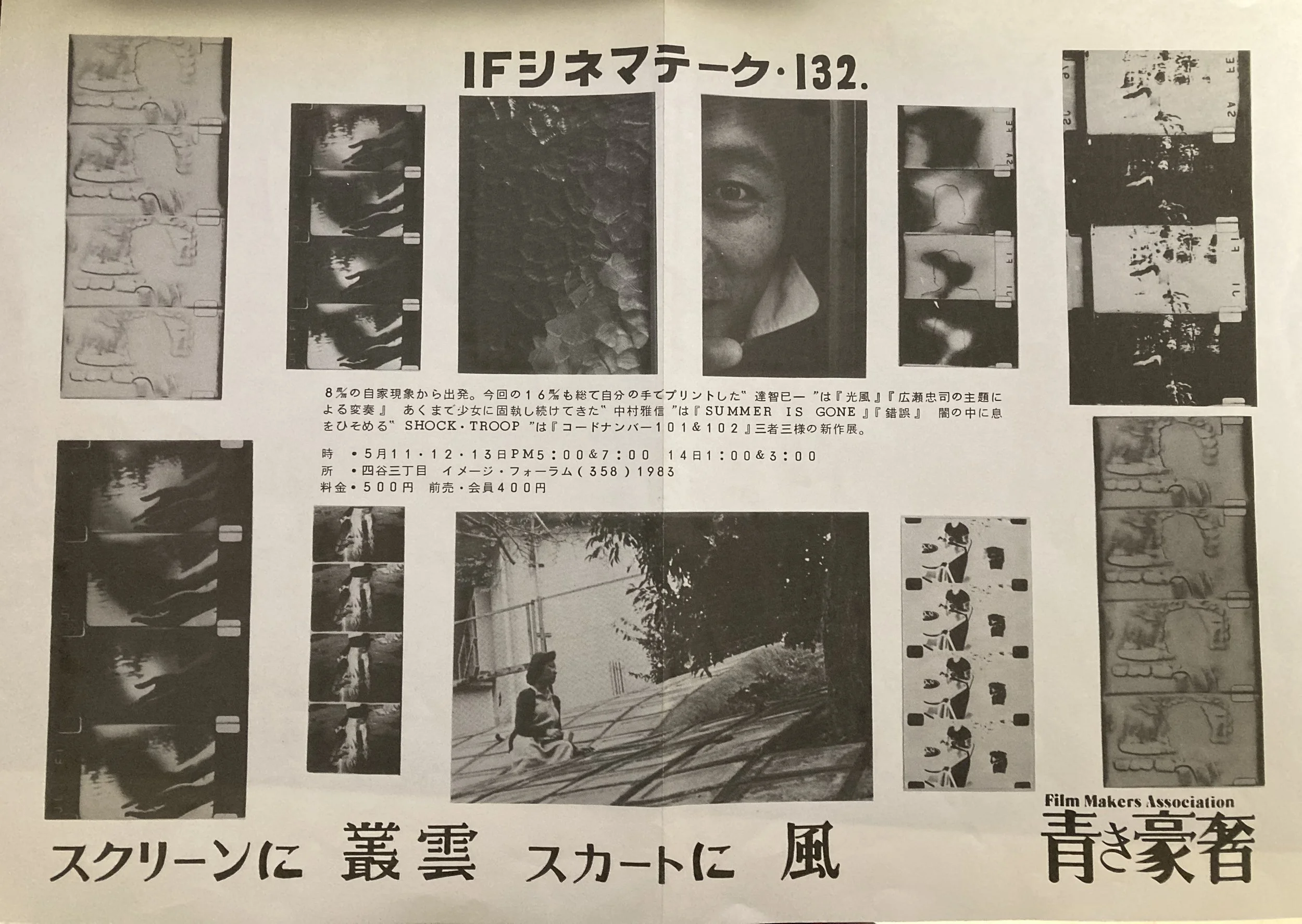
Masanobu Nakamura
Source: Art Saloon.
Masanobu Nakamura
Masanobu Nakamura was born in Shizuoka in 1949. After joining a film society at his university he spontaneously purchased an 8mm camera, and completed his first film, Disorder (1969), without any filmmaking expertise, learning by doing. Another Life (1976), which employs the technique of re-shooting filmed images on screen, was highly praised by Toshio Matsumoto and others, and he gained attention as an innovative new presence in experimental film.
He participated in the 100 Feet Film Festival, showing the 16mm works Bizarre Disease 1 (1977) and Commemorative Photo (1978). Takahiko Iimura arranged for Nakamura’s Summer is Gone (1978) to be screened overseas.
In the 1980s, Nakamura prolifically released experimental and provocative 16mm films. In 1985 he made Preview using a home video camera, and went on to make other films in various formats including 8mm, 16mm, and video. After premiering the controversial 142-minute For the Films That Are To Be Buried Alive (1989), which blends 8mm and 16mm, he began exploring new modes of landscape theory. He created works dealing with landscape and memory using 8mm film and Hi8 video, concluding with The Ghost of Memories (1997).






